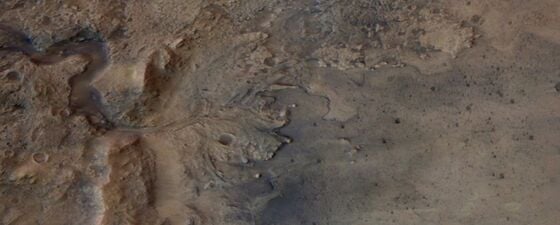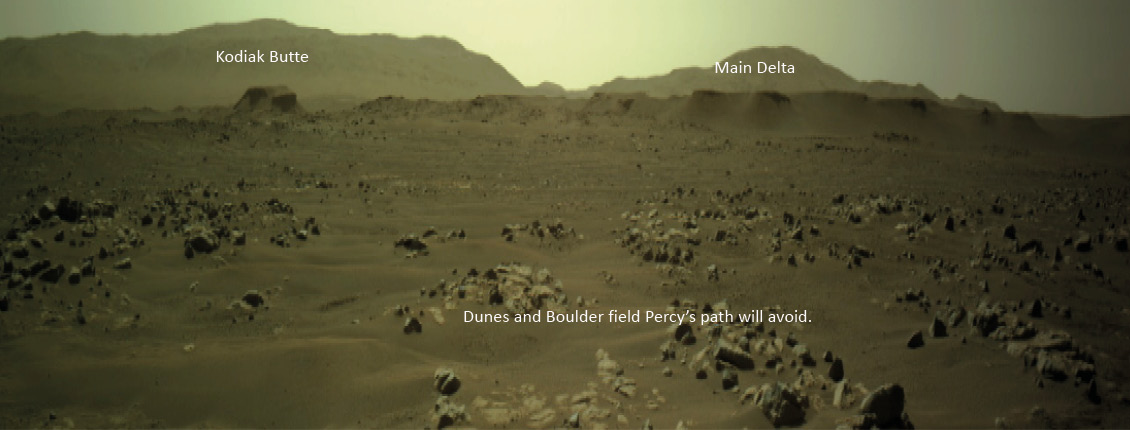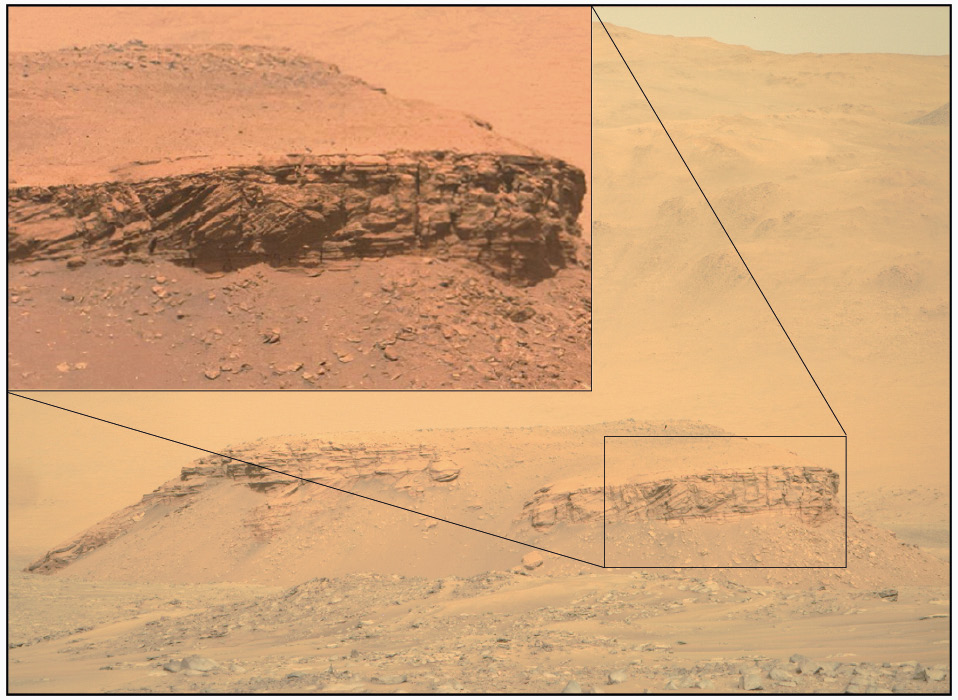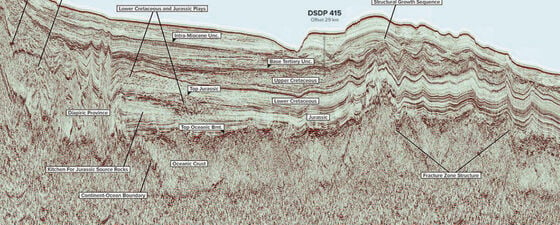There is a wonderful urban myth that in 1877 when Giovanni Schiaparelli used ‘Canali’ in his native Italian to describe linear features on the surface of Mars, the mistranslation of this into English gave birth to the idea of manufactured water courses on our red and fiery planetary neighbour. Actually, nothing was lost or found in his translation, as the hazy optics of telescopes available at the end of the 19th century had led many astronomers to report ‘canals’ on Mars, breathing fevered life into two new genres of literature: Sci-Fi (H.G. Wells’s 1897 War of the Worlds) and space-fantasy (Edgar Rice Burroughs’s 1911 John Carter of Mars).
Fantasy to Facts
Space science is only as good as the data you collect and improvements in optical telescopes soon allowed the concept of canals or rivers, and even free water on Mars to be debunked. Yet after 140 years of remote imaging improvements, some of this needs to be reconsidered. A high-resolution satellite (HiRise) in orbit around Mars has revealed details of many dendritic drainage systems and from the discoveries of a suite of remote-operated vehicles on the surface, we now know the surface of Mars was indeed shaped by water flowing naturally in rivers and lakes 3.5–4 billion years ago, (Ga).
Today, Mars is as cold as central Antarctica. The forces of geology on Mars are alien to terrestrial geologists where plate tectonics, gravity and water (both ice and rain) are the architects of our geography. For over three billion years the surface of Mars has only been sculpted by the gentle winds of a thin atmosphere, volcanism and meteorite impacts. It is a chilly red planet that sits on average 220 million km from the Earth and there is still a lot we do not fully understand about its history – the mysterious chaotic terranes (Meresse et al., 2008) and the fields of Martian ‘spiders’ at the poles (Piqueux et al., 2003). Yet perhaps the biggest unanswered question, one with existential consequence for us all, is whether life once arose independently on Mars.
As we write this, history is being made as the second robotic geologist to put wheels on Mars, a small car-sized rover called Perseverance (Percy), has set off on a new adventure: the search for signs of ancient life in and around the 45 km-wide Jezero impact crater (Croatian for ‘Lake’). Percy is the latest evolution of a series of Martian rovers, namely Spirit, Opportunity, and the Mars Science Laboratory Curiosity. Curiosity landed in Gale Crater in 2012 with the job of looking at outcrop and at hand-specimen-scale rocks for signs of ancient water. In over 3,000 ’sols‘ (Martian days) since landing, it has travelled 25 km exploring for signs that Gale Crater was habitable in the past. Nuclear-powered like Percy (Plutonium 238 and a thermocouple), Curiosity has fantastic technology on board including an X-ray fluorescence analyser and has undertaken some great science on its nine-year exploration. However, its greatest success and impact is arguably from the hi-resolution images it has sent back. Hundreds of images show geology laid down in high-energy rivers and flash floods, pools and small lakes. So, eons ago there was water and plenty of it. What Curiosity’s successor is going to do, is to search in a depositional environment that may have been conducive to supporting aquatic organisms and potentially life as we know it.
An Amazing Journey
The technical challenge of successfully landing a probe on Mars is difficult enough but having it function afterwards is frankly miraculous. Percy had a 7 month, 480 million km trip, at speeds of 40,000 km/hr. Nasa has engineered an incredible system to land a rover on Mars in one piece, by attaching a personal ‘jet pack’ to Percy to slow it down as it approaches the surface and then lowering the rover to the ground on detachable cables (Figure 2). At the end of its extraordinary voyage, Percy was deployed gently to the Martian surface, an incredible 3m away from the intended landing site. If this were a Hollywood movie you might be impressed, but this is real life technology which is frankly amazing. Shortly after landing Percy dropped off its passenger – a small robotic Ingenuity reconnaissance helicopter, which has now successfully completed three flights – the first powered controlled flight using atmospheric lift on another world. The small coaxial, drone rotorcraft is serving as a technology demonstrator for the potential use of flying probes on other worlds and will have the potential to scout locations of interest and support the future planning of driving routes for Mars rovers. Its flights will be telerobotically planned and scripted by operators at the Jet Propulsion Laboratory.
Terrestrial Sedimentology, Mirrored on Mars?
The Jezero Crater where Percy has landed is a late Noachian crater formed by a meteorite impact (or bolide, 3.8 Ga). Most of the floor is a fairly flat layer of volcanic ash-fall tuff deposited in the first 100 million yrs after the ‘bolision’ and is scattered with boulders from crater wall collapse and other later bolide impacts. Volcanism on Olympus Mons (the largest volcano on Mars and indeed in the solar system) started around this time and has continued episodically to almost the present day. The volcanic ash in the Jezero Crater is mostly basaltic, but some of this material has altered to magnesium carbonate and serpentinite via a process of hydration. Identifying this transformation from an orbiting satellite gave a hint to the main actor in the geodrama of the crater. Indeed, on the north-west and west-side of the Jezero Crater is the most extraordinary, raised feature, which suggests how this hydration occurred.
Beyond Jezero’s north-west crater wall, on HiRise satellite images, there is a sinuous and dendritic channel feature that approaches a breach in the outer rim and leads to what appears to be a large fluvio-lacustrine delta of Late Noachian Age (3.7 Ga) (Figure 1). Here, a series of apparently prograding point bars have migrated out into the crater, when it was full of water, then sequentially avulsed to build a delta fan morphology (Figures 1 and 3). Multiple fluvial channels cross the delta top to an abrupt edge, were the delta has been eroded during the subsequent draining of the Jezero Crater (Figure 4). The depth of the water column in the lake at a given time and chemistry of the water will be deducible from images of outcrop (the sequence stratigraphy of the prograding delta) and science experiments undertaken by Percy in the next few months. Currently Percy is sitting just basinward of the prograding clastic delta, on the hydrated volcanic sediments that would have once been the lake bottom.
More Iceland than Idaho
An obvious question might be what was the climate like on Mars when water was flowing? The Curiosity rover did some X-ray powder diffraction (XRD) on phylosilicates and NASA geoscientists then matched them to different environments on earth and came up with a ‘more Iceland than Idaho’ correlation.
At some point in Mars’s history, some 3.2 to 3.0 Ga ago, free water no longer flowed on Mars and the lake dried out. The basinward edge of the delta is today, a very steep set of cliffs or bluffs. Partly eroded by the low-stand of the lake drying up, and with no free-water to remove eroded materials, these bluffs have since been cut back solely by the wind of Mars’s thin atmosphere. Blowing gently but for 3.5 Ga, these winds have preferentially removed mudstone flakes leaving the coarser sand ‘skeleton’ of the delta behind. The first images to be sent back show large cliffs on this isolated hill (or ‘butte’) in the crater, where 30–40m vertical outcrops sit above alluvial-type scree deposits (Figures 4 and 5). This butte, named ‘Kodiak’, is 52m high and 2.5 km from Percy. The spectacular cross-bedded unit is 10–15m thick. The lower units in these sequences would have been deposited on the lake bottom and present a logical place to look for organic-rich materials (the Curiosity rover has already detected organic chemicals in a core in the Gale Crater), which deposited on the lake floor or formed mats at the lacustrine crater rim.
Remote Sample Delivery
Mars’s lack of a convecting mantle means that unlike Earth, it has an insufficient magnetic field to deflect the solar wind, allowing the atmosphere to be progressively stripped over the last four Ga. But at the time of the formation of the Jezero Crater Delta, conditions on Earth may not have been too dissimilar from Mars. 3.7 billion years ago on Earth, the first signs of multicellular life, cyano-bacteria, were emerging, and leaving traces as stromatolites. Such ancient rocks are not that common on the turbulent plates of the erosive water-bearing Earth, but on Mars they are widespread and pristine. The challenge for Percy is to find signs in these old rock sections that as life was gaining a toehold on Earth, the same was occurring on Mars.
On its journey over the next several years Percy will be looking for stromatolite-textured rock formations, organic-rich horizons, and textures that may represent algal mats at the edge of the Jezero lake (although these didn’t develop on Earth until the Mesoproterozic) using its arsenal of on-board technology. On the mobile laboratory are an array of equipment including PIXL (X-ray fluorescence Lithochemistry), SHERLOC (Raman and Luminescence for analysing Organic Chemicals) and a drill to take rock cores from the outcrops. Curiosity has drilled cores too, but Percy’s cores will be stored with an audacious ambition. In a few years’ time, Nasa plans to send another probe to Mars to meet up with Percy, pick up the collected regolith rock cores, and blast them into low Mars orbit where another craft will catch them and with an ‘Amazon-like delivery’ send them back to Earth. Percy is the first step in what is termed the Mars Sample Return in which about 35 samples, each weighing around 15 grams will eventually be sent to Earth. This will arguably be mankind’s most complex and astonishing practical achievement if Nasa brings it off.
If successful with its exploration for signs of life, Percy will prove that life did not just arise on Earth, and that life can spark on other planets, even those of very different size, chemistry and environment. If life has arisen independently on Mars nearly four billion years ago, then for a brief moment, we weren’t alone in our solar system. Perhaps then, even the most hardened sceptic might admit the high probability of other life, and perhaps even geologists, elsewhere in the universe.
References
Meresse, S., et al. 2008. Formation and evolution of the chaotic terrains by subsidence and magmatism: Hydraotes Chaos, Mars. Icarus, 194(2), pp.487–500.
Piqueux, S., Byrne, S. and Richardson, M.I. 2003. Sublimation of Mars’s southern seasonal CO2 ice cap formation of spiders. Journal of Geophysical Research, 180(E8), 5084










